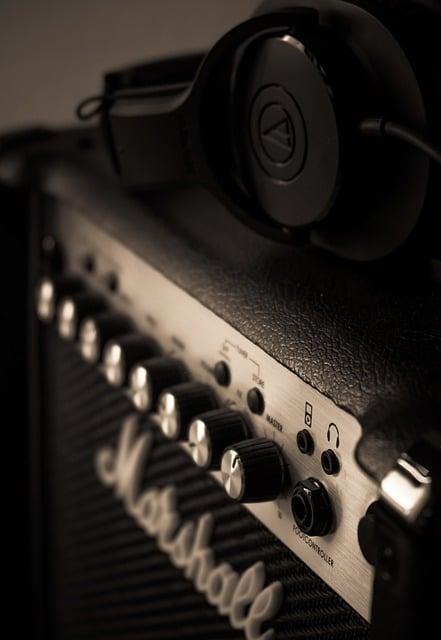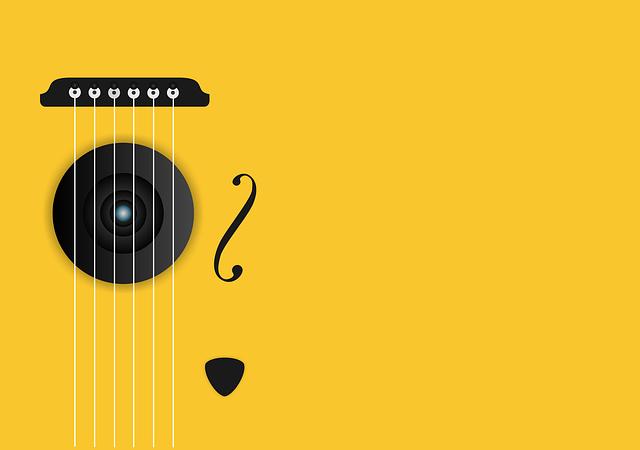Have you ever found yourself lost in a melody, where time seems to stretch and bend with each note? Music has this peculiar ability to capture moments, coaxing emotions from the depths of our souls and transporting us to different places and times. It whispers stories and paints vivid landscapes in our minds, all while dancing along the strings of our hearts. Yet, amid its enchanting allure, there’s a fascinating question that lingers: what does duration really mean in the world of music? Is it merely the ticking clock, the length of a song, or something much deeper—a rhythm of life itself? In this exploration, we’ll delve into the concept of duration in music, unraveling its significance and the impact it has on our experience. From the fleeting notes of a single piano key to the expansive symphonies that fill concert halls, join us as we embark on a journey to understand the timeless echo that resonates through every beat.
The Pulse of Time: Understanding Rhythm in Music Creation
When we think about rhythm in music, it’s like the heartbeat of a song. Just as our heart pumps blood and sustains our life, rhythm propels music forward, creating a sense of movement and energy. Understanding rhythm means diving deep into how beats interact, establishing a foundation that supports melodies and harmonies. It’s a dance between time and sound, where every beat serves a purpose, guiding how we perceive music. Imagine a clock ticking away, its consistent ticks reminding us of our own pulse. This is how rhythm works; it gives shape to our sonic experiences, creating patterns that our minds latch onto. So, it’s no wonder that rhythm can evoke a whole spectrum of emotions, from the exhilarating rush of a fast-paced drum beat to the tranquil calm of a slow ballad.
As we explore the intricacies of musical duration, think about the elements that influence rhythm—time signatures, tempo, and dynamics all play crucial roles. Here are some key factors to consider:
- Time Signatures: These provide the framework for how many beats are in a measure, influencing the overall groove.
- Tempo: The speed of a piece can change how we feel it; fast tempos can energize us while slow tempos invite introspection.
- Dynamics: Variations in loudness add texture and depth, creating more engaging rhythmic patterns.
It’s fascinating how all these elements interconnect to create the rhythm that we feel deep within us, akin to a painter mixing colors to achieve the perfect hue. Just as every artist has a unique style, every musician crafts their rhythm, contributing to a rich tapestry of sound. Each choice made in rhythm shapes the music’s identity and leaves an indelible mark on its listener.

Melodies that Resonate: The Impact of Duration on Emotional Experience
Duration plays a pivotal role in shaping our emotional experience with music. Think about the way a short, snappy pop song can instantly lift your spirits compared to a lengthy symphony that takes you on a winding journey of emotions. It’s fascinating how the length of a piece can dictate not only our mood but also how deeply we connect with its essence. Shorter tracks often deliver bursts of energy or quick bursts of nostalgia, while longer compositions allow us to delve deeper, creating a tapestry of emotions that may resonate on multiple levels. This longer exposure frequently encourages a more profound reflection, fostering emotional depth that shorter pieces may bypass.
Moreover, consider how we engage with songs based on their duration. Our preferences can shift depending on the setting—a catchy tune during a road trip, or a sprawling ballad during a quiet evening at home. Here are a few intriguing points about how duration affects our encounter with music:
- Instant Gratification: Short songs provide immediate emotional payoff, perfect for quick mood boosts.
- Emotional Journey: Longer pieces can transport listeners through a series of emotional landscapes, enhancing depth.
- Listenership Impact: Attention spans can vary greatly; shorter tracks cater to fast-paced lifestyles, while longer works engage committed audiences.
Through these different experiences, we can see that duration is more than just a number; it is a significant factor that influences our emotional connection with music. Just as a good story needs the right pacing to build suspense or deliver a punchline, music relies on its duration to create a meaningful emotional dialogue with its listeners.

Crafting Sonic Narratives: Techniques for Mastering Song Length
In the world of music, the duration of a song can evoke a wide spectrum of emotions. Crafting a sonic narrative is akin to telling a story, where length plays a pivotal role in how the listener engages with the material. Think about it: a well-timed crescendo can feel like the climactic moment in a thrilling novel, while a drawn-out chord might resonate with the lingering weight of a poignant memory. To master this art, one can focus on several key techniques that help shape the overall experience:
- Dynamic Variation: Play with different lengths of sections within the song to keep listeners on their toes.
- Bridge and Hook Balance: Ensure that your hooks are memorable but not overstayed—think of them as that catchy friend who knows when to leave the party!
- Tempo Changes: A shift in pacing can make an entire piece feel entirely new, similar to adding a twist in a good plot.
Additionally, consider using a structured approach to songwriting, where the length serves a specific purpose. Here’s a simple table that breaks down various song types and their typical lengths, offering a quick reference to help you tailor your narrative:
| Song Type | Typical Length |
|---|---|
| Pop Song | 3-4 minutes |
| Ballad | 4-6 minutes |
| Jingle | 15-30 seconds |
| Instrumental | 3-7 minutes |
By integrating these elements into your music, you’ll not only maintain the listener’s attention but also guide them through an emotional landscape that feels both cohesive and impactful. After all, the duration of a song is not merely a number; it’s a canvas for creativity, inviting you to paint your sound story.
Exploring the Unseen: How Silence Shapes Musical Duration
When we dive deep into the world of music, it’s easy to focus solely on the notes and melodies that grace our ears. However, the absence of sound plays a pivotal role in shaping the experience of musical duration. Think of it like a painter using negative space to create a breathtaking landscape; silence frames our understanding of the music in profound ways. It allows the notes to breathe, creating tension and resolution that resonates with the listener. This dynamic dance of sound and silence makes each note feel like it holds weight, evoking powerful emotions that linger long after the final chord fades.
In fact, silence can be just as expressive as sound itself. Musicians often use deliberate pauses to punctuate a piece, drawing the audience into a shared moment of reflection. Consider how different styles utilize silence: classical composers may employ a gentle rest to heighten anticipation, while modern build-ups in electronic music might stretch silence to prolong intensity before a drop. This interplay leads to a richer understanding of time and rhythm. Here’s a quick look at how different genres harness the power of silence:
| Genre | Use of Silence |
|---|---|
| Classical | Strategic rests enhance emotional depth. |
| Jazz | Improvisational pauses create tension and release. |
| Rock | Silence before a powerful chorus amplifies impact. |
| Electronic | Build-ups utilize silence for dramatic effect. |
Key Takeaways
As we draw the curtain on our exploration of “,” it becomes clear that music is more than just a series of notes and rhythms—it’s an experience, a journey through sound that transcends the confines of time. Just like a river that flows effortlessly, carrying with it stories of the past and present, music dances through our lives, shaping our memories and emotions.
The duration of a musical piece isn’t merely a measurement; it’s a vehicle that transports us to different realms, allowing us to feel, reflect, and connect. Whether it’s the fleeting joy of a pop hit or the profound depth of a classical symphony, each note played, each pause taken, resonates with the echoes of our shared human experience.
So, as you step away from this article, think about the sounds that fill your day-to-day life. Each song you listen to, each melody you hum, carries with it its own unique story—a timeless echo inviting you to dive deeper into the ocean of music. What narratives will you uncover next? Remember, the beauty of music lies not only in its duration but in the moments it creates, the emotions it stirs, and the connections it fosters. Let the echoes guide you, and may each note take you on a new adventure.



